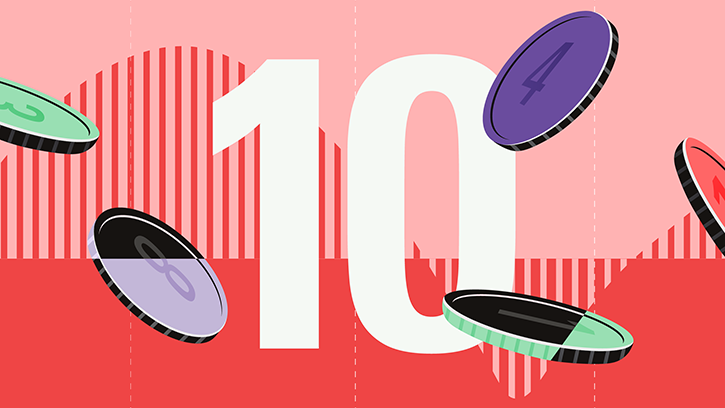
Every month we check on how various exchange traded products (ETPs) are doing, and in March, the list of best performers was topped by Bitcoin Tracker One XBT Provider (0PTL).
Indeed, shortly after the collapse of Silicon Valley Bank last month, the price of Bitcoin soared above $25,000, reaching a threshold the digital currency hadn’t touched since June. At the end of March, Bitcoin reached nearly $30,000, up 70% for the year.
As we explained in a recent interview, Bitcoin was among several cryptocurrencies profiting from the banking crisis, but other structural factors helped drive the rally too.
Eliézer Ndinga, Director of Research at 21Shares, told us that the narrative of Bitcoin being an alternative to existing financial systems is emerging again due to rising interest rates and the fall in bond prices. Plus, cryptocurrencies are seeing additional use cases and applications like NFTs and smart contracts.
“These two tailwinds really benefited the price action of crypto assets,” Ndinga says.
Top Performing ETFs
Another clear group winning out in March was ETFs exposed to gold and related mining stocks, with no less than eight trackers exposed to this sector within the Top 12.
The benchmark London spot gold broke through the $2,000-an-ounce level on March 20, the highest price seen in the past 12 months. There is a long-standing relationship between the economic crisis and the price of gold. When there is uncertainty in the economy, investors tend to turn to gold as a safe-haven asset, which drives up its price.
Beyond events in the banking sector, this rally is arguably also associated with the uncertainty around the US Federal Reserve’s rate hike moves. In this context, precious metal mining stocks tend to follow the direction of precious metal spot prices, usually amplifying its movements.
Worst Performing ETFs
It’s no surprise that the list of worst performing ETFs is topped by the iShares S&P U.S. Banks ETF (BNKS)–which is exposed to the American banking sector. The panic following the collapse of two regional lenders Silicon Valley Bank and Signature Bank spread like wildfire among investors concerned about possible systemic consequences.
Natural gas ETCs also suffered. Lower demand helped depress gas prices in Europe from an all-time high of €340 last August to €42 at the end of March. Moreover, the success the EU has had in lowering gas consumption has reduced the short-term call on US LNG to close supply gaps. The resulting price decline meant US-EU gas spreads collapsed and investors in Exchange-traded commodities sold out. To read more about this, read our recent analysis.
Finally, the fact that UBS’s Credit Suisse rescue deal included a write-off of CHF 16 billion in Additional Tier-1 (AT1) capital to zero, shook bond funds and ETFs exposed to the asset class. In the bottom performer list, we find Invesco AT1 Capital Bond ETF (AT1) and WisdomTree AT1 CoCo Bond UCITS ETF - USD Acc (COCB), which lost 16.7% and 15.2%, respectively.
Biggest ETFs in March
Monthly top and flop performers often coincide with very volatile and therefore risky products, which should play a satellite role in your portfolio. As such, we also include an overview of the biggest European-domiciled ETPs in terms of assets, which could be more appropriate to consider among core holdings. Performance in March 2023 range from 6.2% for the iShares Physical Gold ETC (IGLN), down to the iShares Core FTSE 100 UCITS ETF GBP Dist (ISF),which lost 2.5%.
Tab Biggest here
Methodology
According to Morningstar data, there are about 48 percentage points between the best and worst performing Exchange-traded products (ETPs) in March, with returns for the month ranging from 20.6% to -27.4%.
We have looked at the key trends in the third month of the year, excluding inverse and leveraged funds. These instruments, being purely passive products, reflect the evolution of the markets without the bias (good or bad) of an active manager.





























